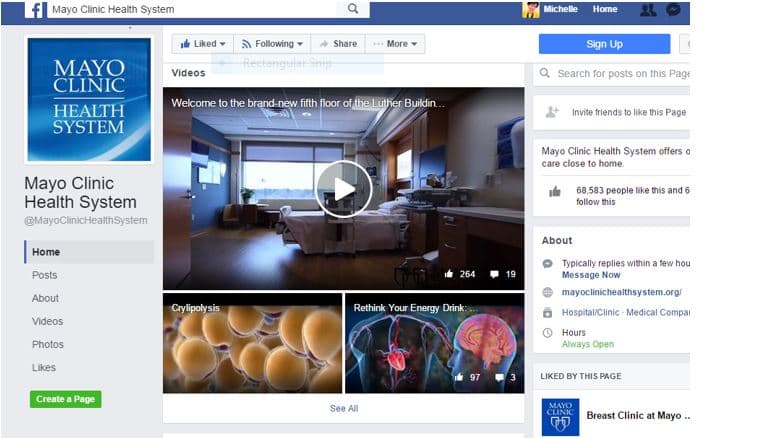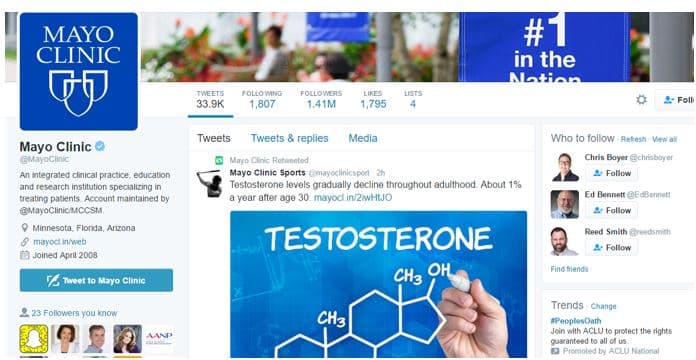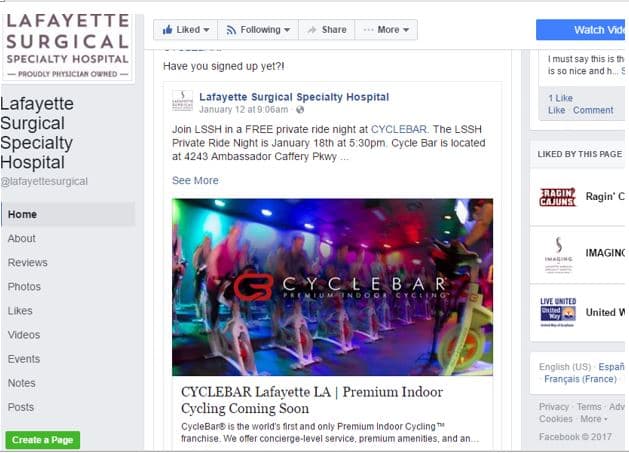Angie Frederickson has two decades of marketing and journalism experience, and her specialty is healthcare marketing. Her impressive resume includes a four-year stint as the marketing manager at Children’s Healthcare of Atlanta, and she has worked on content marketing and social campaigns for a variety of healthcare-related projects. In this installment of Copywriter Q&A, Angie spoke with The Writers For Hire (TWFH) about the role of social media in healthcare — particularly where reviews are concerned.
TWFH: To start off, can you tell us a bit about your healthcare background?
AF: So, my entire family is in health care. They’re all clinicians. That never interested me, but I’ve been around it my whole life, and I randomly decided to go back to school for health administration with a concentration in marketing. I already had a background in marketing, so I combined my interest in marketing with healthcare. From there, I went to work for Children’s Healthcare in Atlanta, where I developed strategic marketing plans focused mainly on pediatric injury prevention. It was an educational role; we’d reach out to parents in under-served communities and teach them how to protect their kids. We did campaigns about car seats, bike helmets, and drowning prevention.
TWFH: How has social media changed healthcare marketing?
AF: Healthcare has become more of a commodity; it’s more consumer-driven. In general, this is a good thing, but it also takes a little bit of the “expertise” feel out of it. Doctors were always put on a pedestal: They’re smart, we do what they say. But now, “Dr. Google” is everybody’s favorite source. There’s so much information out there, and social media has given the healthcare industry extra responsibility and accountability to make sure that the right information is out there. But social media also allows for more quick communication. It’s common to hear patients say, “I can’t get through to my doctor,” or “I have a simple question, but nobody will call me back.” But with social, they can get answers quickly.
TWFH: What kind of social media presence should a healthcare provider have? Which sites/platforms make the most sense?
AF: Traditional platforms: Facebook, Instagram, Twitter. Personally, I think Facebook makes the most sense. I’m on Facebook, along with the rest of women of a certain age — they’re the largest healthcare decision-makers for themselves and their families. So, hitting up a bunch of moms on Facebook makes sense to me.
TWFH: How should healthcare providers use their social accounts? Are there certain types of content that tend to do better/attract more responses than others?
AF: More personal and practical is best. Part of the goal is to make healthcare providers more approachable, to show a “bedside manner.” To me, video is the way to go. A common complaint today is that healthcare isn’t personal enough; it’s too corporate now. But if you’ve got a doctor speaking directly to you in a video, it makes them seem relatable. And I’m not talking about high-tech, high production values — it’s better if they just set up their phone and record. An almost “homemade” appearance makes them seem like normal people. Also, random pictures of the office staff do really well. Or posts that say, “It’s Nurse Susie’s birthday!” People love that. It back to the idea of being approachable.
TWFH: Can you share an example or two of the most interesting/creative/innovative ways that healthcare providers are using social media?
AF: I saw a healthcare website where they were using social media for a weight-loss challenge. People could post updates and be encouraged by physicians. It was a two-way street. It wasn’t the organization just shooting out info. It got people involved.
TWFH: Is there anything that a healthcare organization should avoid when using social media?
AF: If you’ve got someone coming to your page, saying, “Hey Doc, I’ve got this rash . . . ” No. You can’t do any sort of diagnosing. You can’t put any personal information out there. You also need to make sure that any sort of references to a patient’s name, photo, etc. are all approved in writing ahead of time. Most healthcare organizations are engulfed in HIPAA — they are very aware of privacy issues.
TWFH: So, what should a healthcare organization do if someone posts on their page asking for medical advice or (eww) wants to talk about their weird rash?
AF: It’s a good idea to have a generic response for stuff like that. For example, “Thanks so much for reaching out, if this is an emergency, please dial 9-1-1.” Something that a lawyer has “blessed.”
TWFH: Let’s switch gears a little and talk about reviews. What makes online reviews so important to healthcare providers?
AF: I think because people are scared to death of medical mistakes. There’s more at stake than deciding where to go to dinner. Reviews give them credible, real-life experience.
TWFH: What are the most important healthcare review sites?
AF: People go to the usual suspects: Google and Yelp. People are flocking to online review sites like crazy to make sure their doctor or healthcare organization is a good one.
TWFH: How can healthcare providers or facilities encourage patients to leave positive reviews?
AF: It depends on the type of practice. For example, if you’re an aesthetician, you might do a giveaway or a discount. But if you’re an oncology practice, that wouldn’t be appropriate. You can also set up computers or iPads right there at the checkout, with the review site already pulled up. Ask for reviews right there. People are receptive to that, especially if they’ve had a good experience.
TWFH: What do patients typically mention in positive reviews? What motivates them to leave positive reviews?
AF: If they’ve been to other doctors and find someone who finally helps them. For example, “My husband’s knee has been bothering him for years, and we finally tried this new doctor.” They also mention doctors who spend extra time with them and who don’t make them feel rushed. That’s a big deal.
TWFH: So, on the flip side of that: Why do patients typically leave negative reviews?
AF: It’s often for things outside of the control of the doctor or organization. Issues related to insurance. Or because they think the surgery center charged way too much. People also talk about long waiting times or feeling rushed through the appointment. They’ll also leave negative reviews if they didn’t get better.
TWFH: What are some strategies for responding to/dealing with negative reviews?
AF: Recap the situation. Be very sensitive. Don’t tell them they’re wrong. You have to be careful not to violate privacy. Even though they’re coming to you with their health information, you can’t respond with anything that would be a violation of privacy. A good strategy is to parrot back a little of what they say. So if they say, “I came in with flu and didn’t get better,” you can say, “I’m sorry the flu treatment didn’t work out.” You can’t say, “Well, we tried X and X medication.”
TWFH: Is there any sort of “rule” about how many negative reviews it takes to make a difference? How can you counteract negatives to sort of balance things out — without being unethical or dishonest?
AF: There’s no scientific basis to this, but I’ve heard that if a doctor has below a four-star rating people get leery. Requesting reviews from patients who have had a good experience can help counter that: Hit up current patients. Try to catch people on their way out after their appointments. People are less likely to leave a negative review while checking out.
TWFH: What would be your plan for a healthcare provider who has little to no social presence or online review activity? What’s a good starting point?
AF: I think the first step is to make sure they have a good website. The goal of social media is to draw people to your website — so if your website is no good, you’ve lost before started. Set up a Facebook page and let people know about it. Post information in offices, exam rooms, and at checkouts. Another thing that works is putting your online patient registration form right next to links to your social media.
TWFH: What is the best way to get patients from a healthcare provider’s social pages to their website?
AF: Doing really good teaser copy to get someone to a blog post, like “Here’s five things you don’t know about breast cancer screenings.” People seem more receptive to going to a specific blog entry. Really the big takeaway for me is finding a way through social to make the clinician or organization seem more approachable. That’s what seems to make the difference.

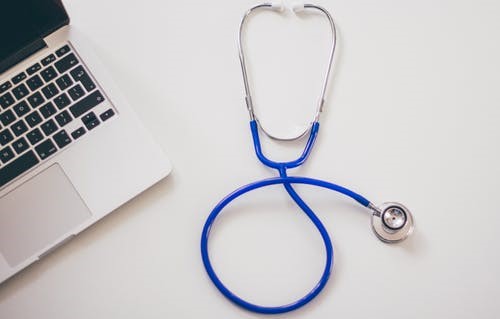

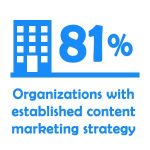 development, creation, and dissemination. Despite this, hospitals have historically
development, creation, and dissemination. Despite this, hospitals have historically 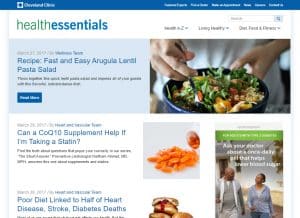 recipes for arugula salad or learn how to help children cope with parental divorce. In 2014, the American Marketing Association
recipes for arugula salad or learn how to help children cope with parental divorce. In 2014, the American Marketing Association 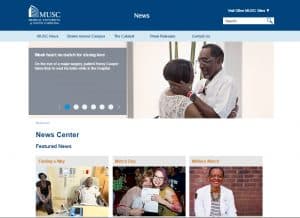 like “Weak Heart No Match for Strong Love,” chronicling a patient’s in-hospital wedding while awaiting major heart surgery. Media and patients alike are drawn to the site, and articles often provide the bases for future media coverage.
like “Weak Heart No Match for Strong Love,” chronicling a patient’s in-hospital wedding while awaiting major heart surgery. Media and patients alike are drawn to the site, and articles often provide the bases for future media coverage.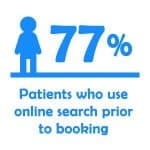 appointments, quality digital content is crucial to convert prospects to acquisitions. As Woolwine explains, “Content marketing forces you to think from the perspective of the consumer or end user. Quite frankly, you should be thinking from that perspective no matter what kind of communicating you’re doing.”
appointments, quality digital content is crucial to convert prospects to acquisitions. As Woolwine explains, “Content marketing forces you to think from the perspective of the consumer or end user. Quite frankly, you should be thinking from that perspective no matter what kind of communicating you’re doing.”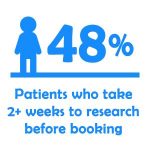 put thought and effort into finding the right medical facility, and nearly half
put thought and effort into finding the right medical facility, and nearly half  Scott Linabarger, is a senior healthcare marketing strategist based in Dallas. He is the former VP of Strategic Accounts at Medicom Health and served in senior marketing positions at Tenet Healthcare and Cleveland Clinic.
Scott Linabarger, is a senior healthcare marketing strategist based in Dallas. He is the former VP of Strategic Accounts at Medicom Health and served in senior marketing positions at Tenet Healthcare and Cleveland Clinic. Heather Woolwine serves as the public affairs and media relations director for the Medical University of South Carolina. Founded in 1824, MUSC is one of the nation’s premier academic health science centers. Heather serves as a spokesperson for MUSC, and actively manages the reputation and image of the enterprise through mass and social media relations.
Heather Woolwine serves as the public affairs and media relations director for the Medical University of South Carolina. Founded in 1824, MUSC is one of the nation’s premier academic health science centers. Heather serves as a spokesperson for MUSC, and actively manages the reputation and image of the enterprise through mass and social media relations.


